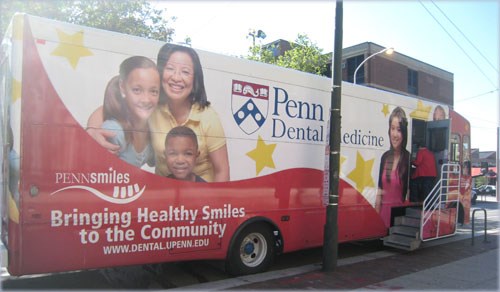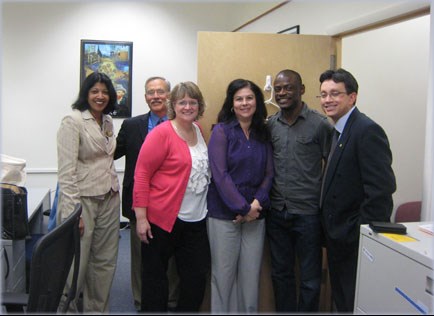United States of America - Oral health Education and Sealant programme for West Philadelphian Schoolchildren
United States of America - Oral health Education and Sealant programme for West Philadelphian Schoolchildren
Introduction
Since 1994, staff from the Community Oral Health Division of the School of Dental Medicine (SDM), University of Pennsylvania, USA, conduct oral health education and sealant programmes in schools in the West Philadelphia area. The cost of this programme is covered by the University funds and state funds.
Background
Dental students and staff members have worked with school district officials in providing classroom oral health education and dental screening in schools for kindergarten to grade 8 children. In 2003, the Penn Smiles, a mobile dental vehicle, providing comprehensive dental care to schoolchildren was commenced. The school-based dental sealant programme was instituted in 2009, using portable dental equipment. The sealant programme targets
elementary schoolchildren (2nd grade (7-8 years) and 6th grade (11-13 years)) in the school district.

Programme Outline
Oral health education and examination in the school
Ms Ellen Witsch, hygienist, accompanies third year dental students to the West Philadelphia schools providing oral health education and screening, making appropriate recommendations and referrals. This is conducted mostly between September to March every year, two to three days per week, covering about 20- 60 children per day.
Penn Smiles mobile van
Ms Debbie Linkstrom, hygienist, together with a dentist staff accompanies dental students to elementary schools, in the Penn Smiles mobile dental van.
Penn Smiles van visits schools every day of the working week.
The van has two dental chairs and x-ray facility. Restorations, sealants and scaling can be conducted in the mobile clinic.
On an average about eight children are examined and treated every day. About a total of 40 children are seen every week.

School-based Sealant Programme
At present, Ms Ellen Witsch and Ms Jill Klischies, two dental hygienists from the SDM accompany the dental students to the school.
Prior to the visit, the school nurse or principal is contacted and the day is fixed for the activity.
Parental consent is obtained before the children are examined.
Classroom, school gym, auditorium, or nurse's clinic is used as the venue to see the children.
The hygienists assemble the equipment in the assigned premises.
On an average, about eight children are examined per visit.
Under the supervision of public health dental hygiene faculty, dental students examine the children, provide oral health education and place sealants if indicated.
Sealant retention rates are being monitored year-to-year.
Achievements
In 2011- 2012, nearly 1200 children participated in these programmes. A total of 94 children received sealants, 297 teeth were sealed. Sealant retention rates and oral health data are monitored through the screening program.
Conclusion
This programme is a good example of a practical and useful educational tool that provides service to the community. The success of this programme lies in the collaboration between the school authorities and the University.

Report by J. Stjernswärd and R Collins
Links
http://www.dental.upenn.edu/pdf/pdf_features/connecting_to_the_community.pdf
http://www.dental.upenn.edu/academic_programs_admissions/dmd_program/community_outreach/penn_smiles/
http://www.dental.upenn.edu/pdf/penn-dental-journal/pdj_fall06.pdf
